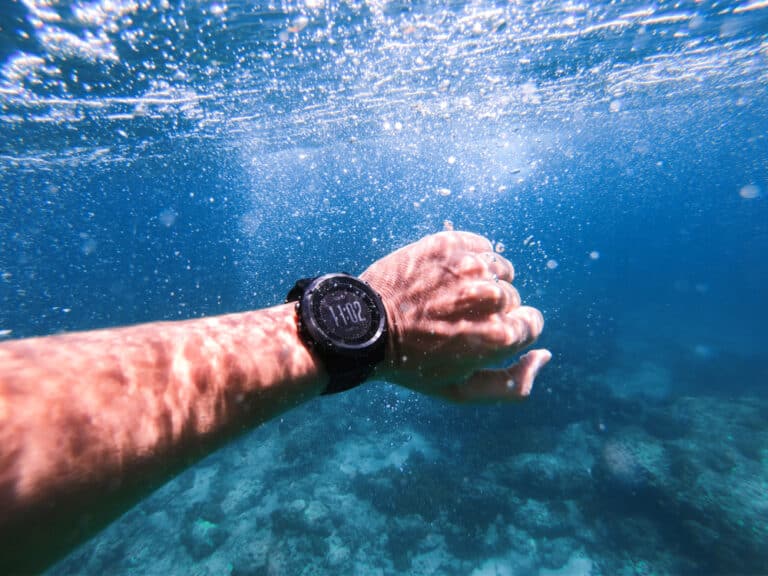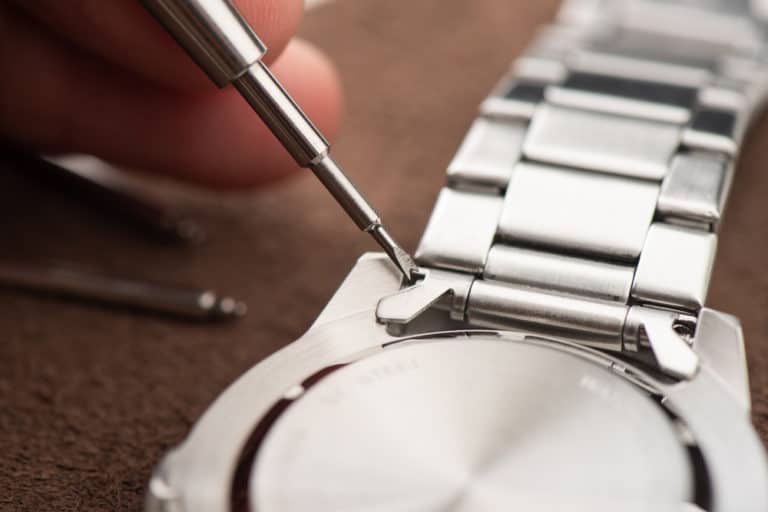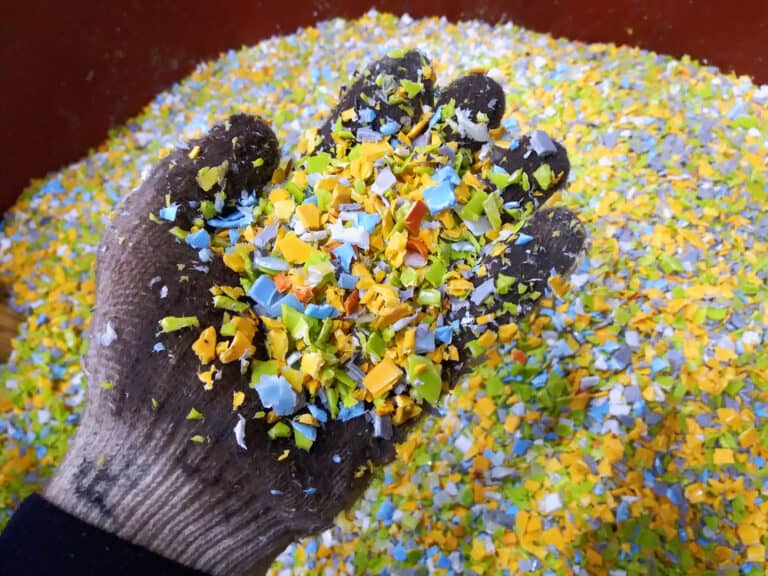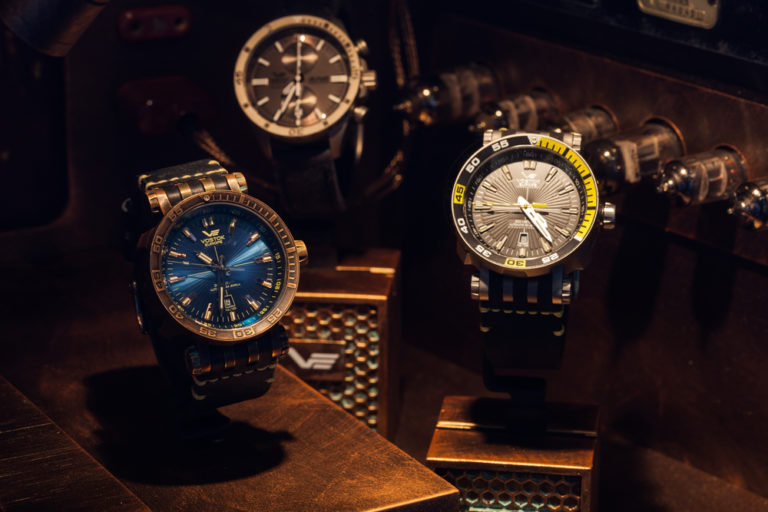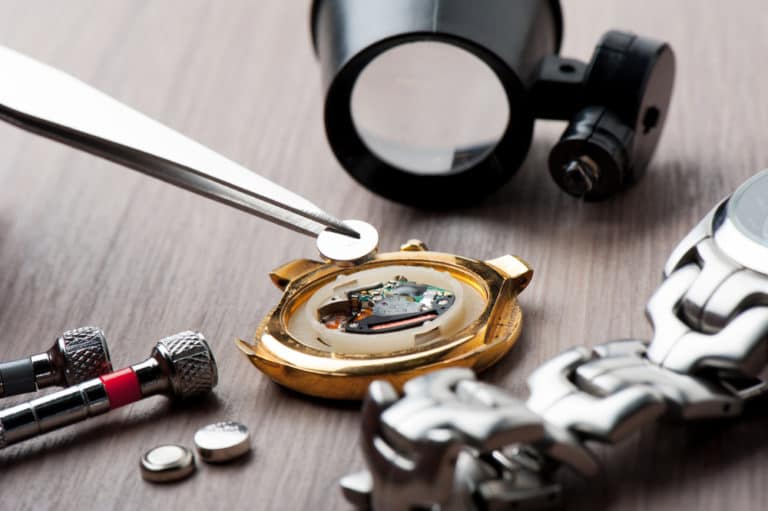The classy appeal of leather watches remains a favorite despite new advancements in strap material! Despite owning different watches, I always gravitate toward my good ol’ leather watch – it’s classy, looks expensive, and compliments my attire perfectly! Leather watches tend to be a little pricier, but how long do leather watches last?
Leather watches can last one to eight years or more, with exotic leathers lasting longer than non-exotic leathers. Leather quality, how often you wear your watch, brand, humidity, cleaning and moisturizing agents and routine, and the mechanism used to fasten your watch affect its lifespan.
Leather is a delicate material that often requires specialized care and attention. Let’s explore the longevity of leather watches, practical methods you can employ to make your leather watch last longer, and what to avoid to prevent drying, cracking, and wear.
How Long Does A Leather Watch Last?
Leather watches get their unique tactile strength and luxurious feel from the creatures that once wore them. As such, the type of leather on your watch will share the same strengths and weaknesses as that creature.
Ostriches endure extreme heat, and, as a result, their leather is exceptionally durable. Crocodile leather is not as resistant to direct sunlight. Furthermore, thicker leather contains a more significant number of fiber strands, making them stronger and more resilient than thinner leather.
Leather watches are a natural product and, like all-natural products, are prone to deterioration and discoloration. Compared to nylon or rubber, leather watches will hold tightly to your wrist and leave little room for breathability.
As such, you’ll sweat more, and the excess perspiration will affect the lifespan of your leather watch. If you wore your leather watch every day for a year, you could expect to replace your leather strap within three to five years. However, if you wore it once a week, that number would extend to eight to ten years.
Regular and premium leather, identifiable by patterns and stitching, have vastly different lifespans, too. Because of the poorer stitching work, the buckle wears into the leather quickly. Using a cheaper leather brand will have you replacing it at least once a year with regular use.
When you buy pricier leather brands, you’ll notice the stitching is solid, and the patterns will line up to create proper shapes. Using high-quality leather regularly requires replacing it every three to five years.
A regular and thorough maintenance routine can go a long way in procuring an excellent quality leather watch. Prevent it from drying and cracking by keeping the leather nourished, away from direct sunlight and liquids, and allowing it to dry in a cool, dry, and dark place after you clean and wear it.
What Can You Do To Make Your Leather Watch Last Longer?
You can extend the lifespan of a leather watch by keeping it away from high humidity, liquids, body lotions & creams or by spraying it with cologne or perfume. Remove your leather watch when you do physical labor or housework. Use a leather-appropriate cleaning agent and let it dry manually.
Regardless of whether you have alligator, ostrich, shark, or stingray leather, the good news is there is a universal care routine that caters to every leather type. Furthermore, there are valuable bits of information to help you care for your leather watch and ensure your leather watch works well and feels great.
High Levels Of Humidity Are Bad For Your Leather Watch
Leather watches suffer in high humidity areas because prolonged exposure will promote mold and bacteria growth. Consequently, the leather fibers start to weaken, crack, and become brittle enough that they can pull apart completely.
Similarly, the molecules of liquids like water attach themselves to the leather. When they start to evaporate, it removes the natural oils in the leather that give it its strength and durability, and as a result, the leather loses its supple attributes.
With no more natural oils, it will dry, stiffen and eventually become dangerously brittle. For this reason, removing your leather watch is crucial before you swim, shower, or go out in the rain. In fact, people may state, “It’s alligator skin – it can handle the water!” – don’t believe those people!
Keep Your Leather Watch Away From Sprays & Lotions
When you spray your perfume or cologne, don’t spray it directly onto your leather watch. If you like hand moisturizer or hand cream, keep them away from your watch. Take off your leather watch first to prevent unnecessary damage when you plan to do some DIY or other laborious work.
If you notice some dirt on your leather watch, rinse it with a bit of clean water and gently dry it with a soft cloth. Afterward, place it in a dark and dry in a place to dry, ensuring you do not expose it to other heat sources.
What If You Accidentally Drop Your Leather Watch In Water?
If you accidentally drop your leather watch in water or get soaked from the rain, remove it immediately and allow it to self-dry overnight at room temperature. Check that it’s completely dry the following day, then apply a leather moisturizer to breathe life back into the leather and fight off any remaining water molecules.
What Can You Use If You Have No Leather Moisturizer?
If you’re desperate and don’t have any leather moisturizer at hand, you can use lanolin oil, almond oil, mink oil, or neatsfoot oil. These oils revitalize the leather and leave it feeling soft and pleasing.
They coat and penetrate the leather fibers, preventing dryness and cracking. The fat molecules in these oils do a great job of moisturizing leather.
Consider using neatsfoot oil if you notice scuffs and cracks in your leather. Using it too frequently will cause deterioration, so use it only as a quick fix. Almond oil is not only an exotic option for cooking! Its plant-based properties make it highly absorbent and add a protective layer around the leather.
Lanolin oil is the best option for really soft leather. Consequently, it’s a good option if you have very rigid leather. Mink oil specializes in restoring the natural oils of leather and, as such, is the perfect choice for dry and cracking leather.
Now, you may want to grab some olive oil out of the kitchen pantry, but resist the urge! Although your leather watch will feel softer at first, it does not nourish or revitalize leather but accelerates its deterioration.
Since leather is porous, it soaks up the olive oil, and because the fats in the olive oil don’t benefit leather, the olive oil will only make the leather greasy and stain it.
Climatic Conditions Affect Your Leather Watch’s Lifespan
Apart from liquids, the two elements that will significantly impact your leather watch’s life expectancy are sunlight and heat. The more of those two elements the watch receives, the darker it will become, too.
For instance, you can wear a beautiful tan-colored leather watch in cloudy London for months, and your watch will not experience the slightest discoloration. However, when you live in a highly humid place like Saudi Arabia, your watch will quickly acquire a new, vintage appeal that you may or may not appreciate!
Avoid Using Multipurpose Leather Cleaners On Watches
Do not use regular leather cleaners and moisturizers on exotic leathers. Crocodile leather will contain different oils than ostrich leather and requires a solution capable of replenishing oils specific to crocodile leather.
There are leather cleaners and conditions for both types of leather, regular and exotic. Keep in mind that some of them can slightly alter the color because of the pores found on the leather.
For this reason, it’s wise to avoid any cleaners or moisturizers that have alcohol. It will dry the leather and leave it looking aesthetically unappealing, plus you’ll be reducing its total lifespan.
Furthermore, test your cleaning agent using a cotton cloth, dabbing a small area of the watch, and letting it sit for an hour or two. You may continue using the cleaning agent if you see no signs of discoloration.
Apply the solution to the leather, rubbing it in circular motions until you cover the entire watch. Afterward, rub it a second time with a clean cloth to remove excess cleaning agent.
A Rotation Of Leather Straps Helps Maintain The Leather
Using multiple leather straps in a rotation can help preserve your leather watch’s quality and longevity.
While having multiple expensive leather straps is not always financially plausible, being able to swap between numerous leather straps will significantly impact the longevity of your leather watch.
When you swap it out, you give the natural oils in the leather an opportunity to rid itself of dirt and bacteria and keep it going for longer.
If you really wanted, you could purchase inexpensive leather straps for everyday use and swap them for your exotic leathers when it comes to business meetings, dates, or special events with friends and family.
Remember, when you wear a leather watch, the perspiration from your body, i.e., water molecules, significantly impacts the oils in leather. Wear and tear, body salt, whether you have a pin buckle or clasp, and how frequently you remove and put on your watch all contribute to its longevity.
How Do You Tell A Good Leather Strap From A Bad One?
Good quality leather has stitching that makes the pattern match perfectly. It feels genuine to the touch and does not have a synthetic feel. Poor quality leather has varied stitching where the patterns do not line up with one another.
It’s no secret that premium items are more expensive because their higher-quality materials make them last longer. As such, purchasing quality leather is the best way to make your leather watch last longer. However, first, you must know how to differentiate poor from high-quality leather.
Companies that produce good leather watches have a positive reputation with their customers. Consequently, it’s a safe bet to opt for a reputable company that focuses on proper stitching and minimal complaints regarding the quality of its leather products.
Furthermore, reputable companies love flaunting the quality of their leather, so if a company makes it suspiciously difficult to find the leather type, mimic their intention and be vigilant.
When you examine leather watches, observe the edges of the leather closely because it’s one of the areas that can tell you whether an item is of low or high quality. Ensure you see painted edges, the only exception being a decorative exception where the corners are purposely left unpainted.
Heavily-Treated Leather Can Indicate Poor Leather Quality
When you shop for a leather watch, you’ll come across vegetable-tanned or chrome-tanned leather. Vegetable-tanned leather utilizes a high concentration of bark and vegetable matter.
It is also very supple and versatile, often used in the fashion industry for bags and clothing. Vegetable-tanned leather pores are usually visible, and they offer excellent breathability.
Chrome-tanned leather looks less natural because the texture is interchangeable with other styles and can appear like crocodile skin or even contain a high-gloss finish.
In comparison, vegetable-tanned leather is thicker and better suited to everyday use, while chrome-tanned leather is more resistant to water and can better handle heat or humidity.
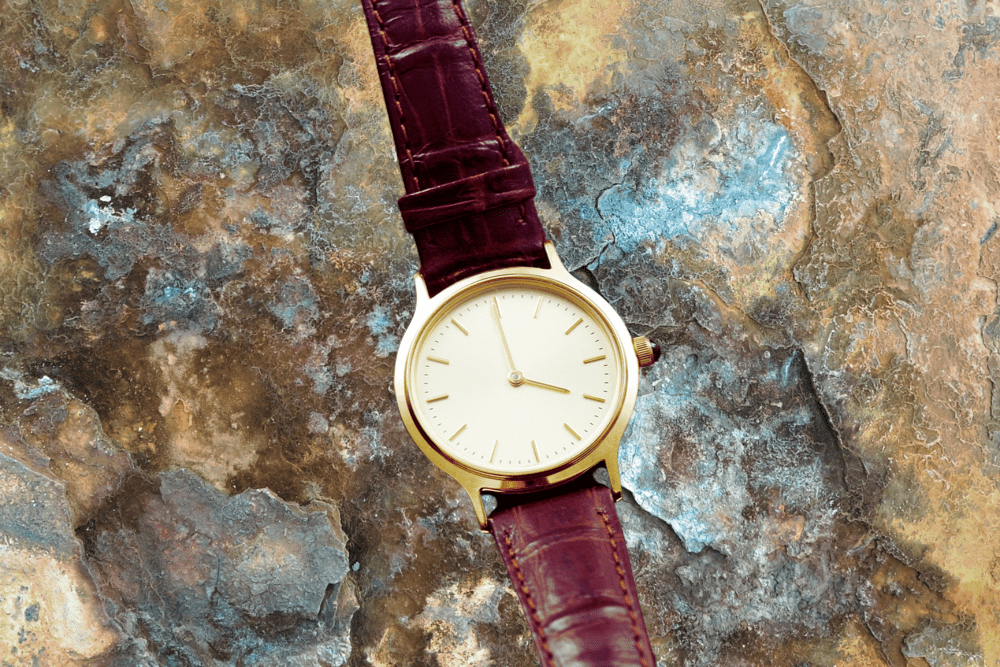
Replace A Pin Buckle With A Clasp To Apply Less Stress
Replacing a pin buckle with a clasp can help relieve pressure on the leather and protect the tiny fibers from wearing.
Using a pin buckle on your leather watch will strain the leather fibers and start eating at the leather after prolonged use. If you replace the pin buckle with a clasp, it eliminates the constant push-and-pull forces that wear the leather when your watch shifts on your wrist throughout the day.
On the other hand, a clasp buckle does not require the fibers to stretch but instead fixes the watch in place. Consequently, the tiny leather fibers last much longer and have an easier time resisting cracking and stretching.
How Do You Stop Your Leather Watch From Cracking?
You can prevent your leather watch from drying and cracking by regularly applying leather moisturizer and conditioner to keep it revitalized.
When leather shows signs of cracking, it’s a larger indication of a minor problem – microscopic changes whereby the tiny fibers become loose until they pull apart entirely. The fibers separate due to excessive heat and humidity or too many liquids.
Worn fibers cause the leather’s aesthetic to appear unpleasant and discolored. During the transformation from the skin to leather, the skin’s protein gets replaced by tanning agents. When the original owner of the leather was alive – the creature – nourished their skin and replenished their natural oils.
The loss of natural oils affects the strength and flexibility of the leather. That said, you can use lubricating oils and waxes to breathe new life into leather and dramatically improve its lifespan. Some Italian vegetable-tanned leathers are reputable for being well-lubricated and luxurious.
Those with dry skin know the challenges of a lack of water and essential oils – leather is equally dependent. When leather stays without natural oils to keep it revitalized, the tiny fibers will start to rub against one another and weaken. Eventually, they will become very stiff and brittle.
It’s possible to restore the aesthetic appeal of leather on the surface level, but it won’t be possible to strengthen the tiny fibers after years of wear and tear.
Hand-Crafted Leather Watches Last Longer
Hand-crafted leather watches take longer to make and often include more intricate stitching and craftsmanship because it takes longer to produce.
If you want a leather watch with a little extra something, opt for a hand-crafted product. Crafting something by hand takes considerably longer, and the room for error is greater than when a machine completes the job.
Consequently, people must take the time to ensure the product contains every little detail necessary to top the competition.
Anyone who has had the opportunity to compare a hand-stitched leather product to a machine-stiched product will urge that there is a distinct difference in the care given.
While machine-made leather products are by no means bad or of low quality, they don’t have the same je ne sais quoi, a quality you cannot easily describe or name.
Furthermore, manufacturers opt to make their products by machines because they can mass-produce them. That fact alone shows that hand-made products have more care and attention to detail.
If you’re interested in a hand-stitched leather watch, consider looking at specific brands like Fossil, which produce mainly hand-stitched leather watches. They will likely be more expensive because they take longer to make, but that also means you’ll save money when they last longer.
Conclusion
Leather watches last between one and eight years. If you use them daily, you can expect to replace them annually. Using them every other week will have you replacing them only once every few years or more. Keeping a thorough maintenance routine will push its lifespan well past its intended use.
Sources
- https://www.watchuseek.com/threads/closer-look-how-long-should-a-leather-watch-strap-last.5330964/
- https://www.watchuseek.com/threads/how-long-should-a-leather-strap-last.3041642/
- https://www.quora.com/How-long-does-the-material-in-watch-bands-last-until-you-need-replaced-or-repair-it
- https://www.quora.com/Do-you-know-how-to-make-your-leather-watch-strap-last-long
- https://www.quora.com/How-often-should-you-expect-to-replace-a-mens-leather-watch-band
- https://www.gearpatrol.com/watches/a33659688/watch-strap-buckles-clasps-guide/
- https://www.wikihow.com/What-Is-the-Best-Oil-to-Soften-Leather

